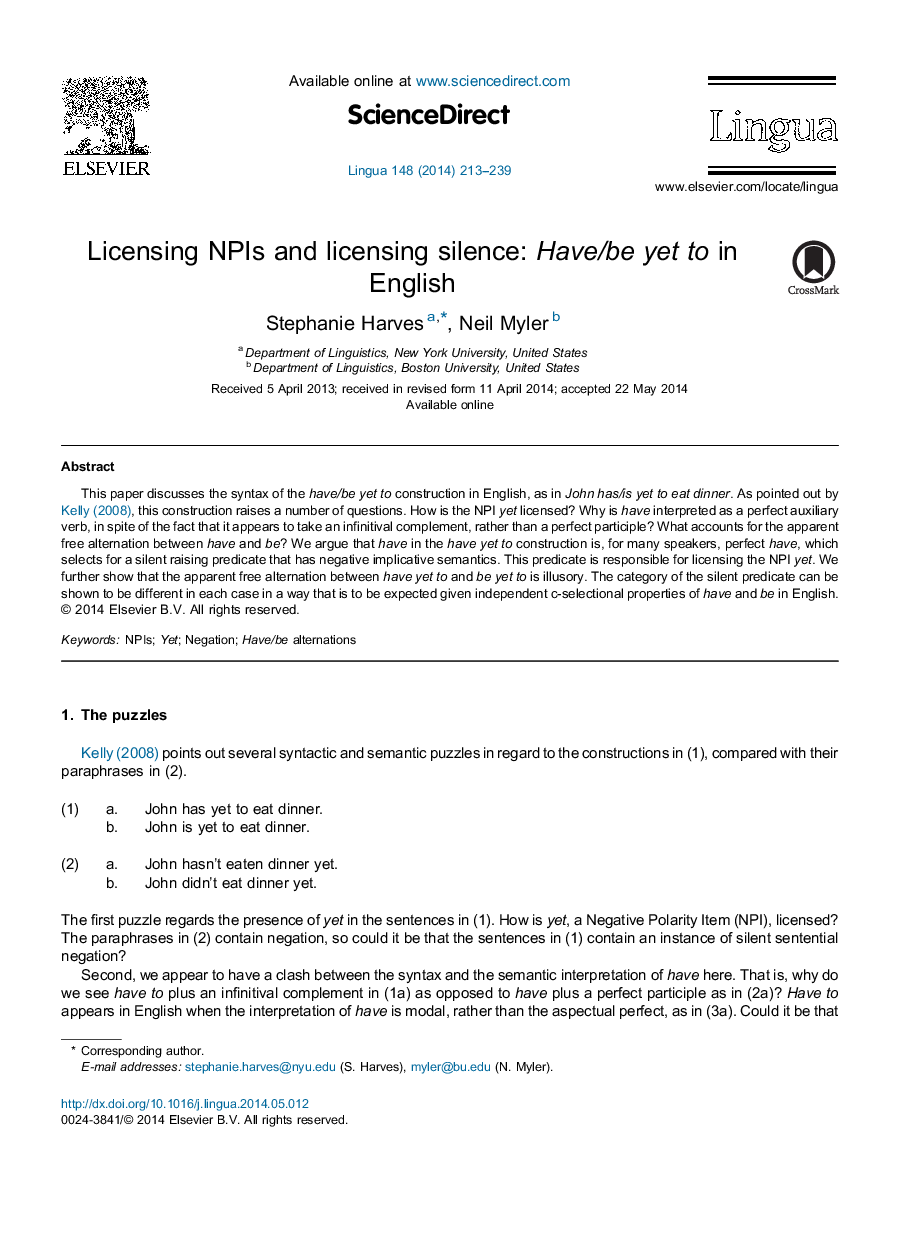| Article ID | Journal | Published Year | Pages | File Type |
|---|---|---|---|---|
| 7298555 | Lingua | 2014 | 27 Pages |
Abstract
This paper discusses the syntax of the have/be yet to construction in English, as in John has/is yet to eat dinner. As pointed out by Kelly (2008), this construction raises a number of questions. How is the NPI yet licensed? Why is have interpreted as a perfect auxiliary verb, in spite of the fact that it appears to take an infinitival complement, rather than a perfect participle? What accounts for the apparent free alternation between have and be? We argue that have in the have yet to construction is, for many speakers, perfect have, which selects for a silent raising predicate that has negative implicative semantics. This predicate is responsible for licensing the NPI yet. We further show that the apparent free alternation between have yet to and be yet to is illusory. The category of the silent predicate can be shown to be different in each case in a way that is to be expected given independent c-selectional properties of have and be in English.
Keywords
Related Topics
Social Sciences and Humanities
Arts and Humanities
Language and Linguistics
Authors
Stephanie Harves, Neil Myler,
